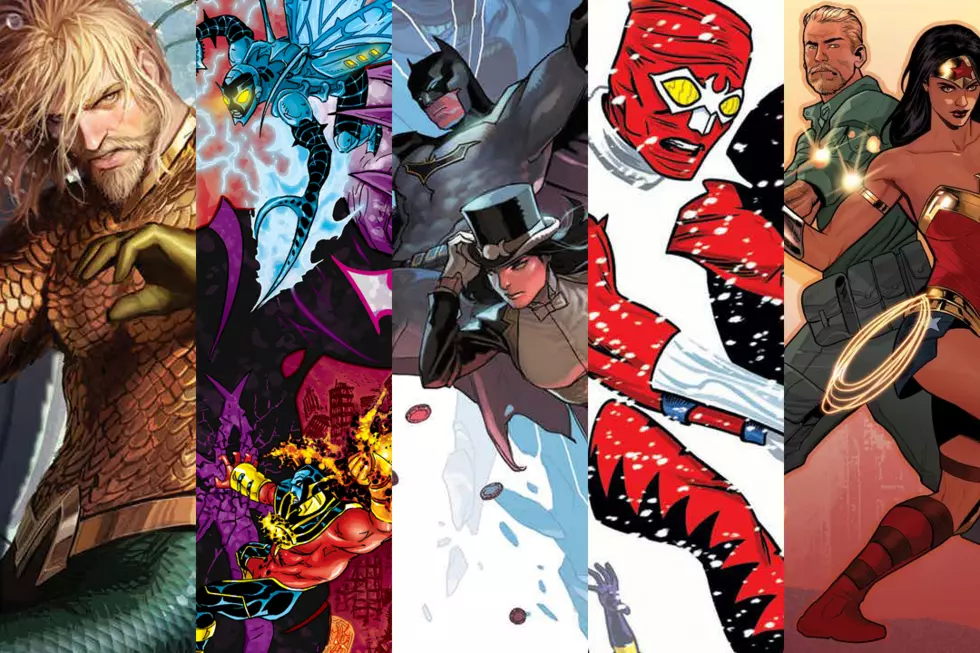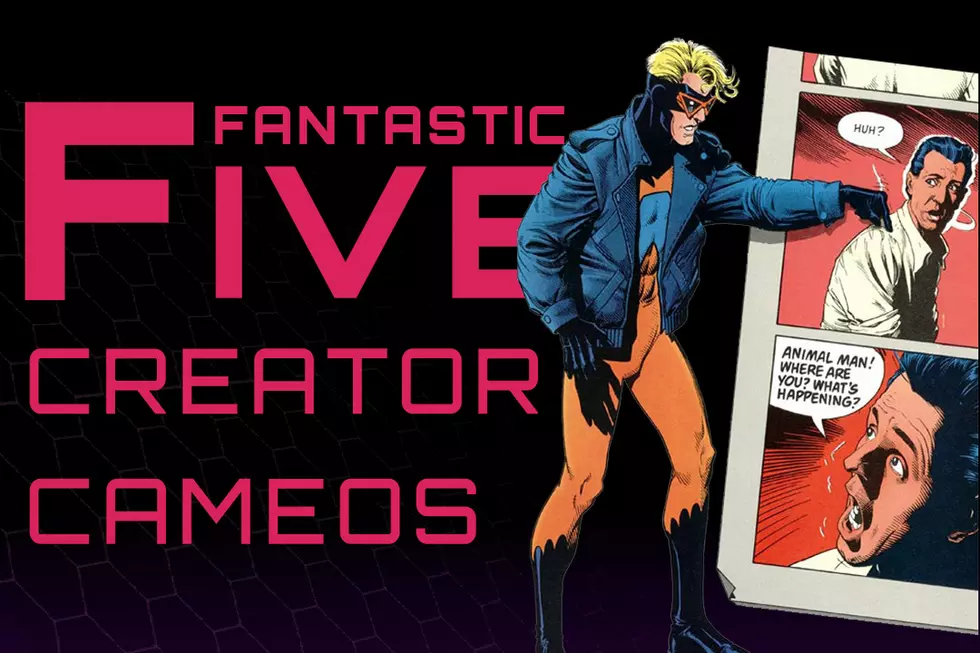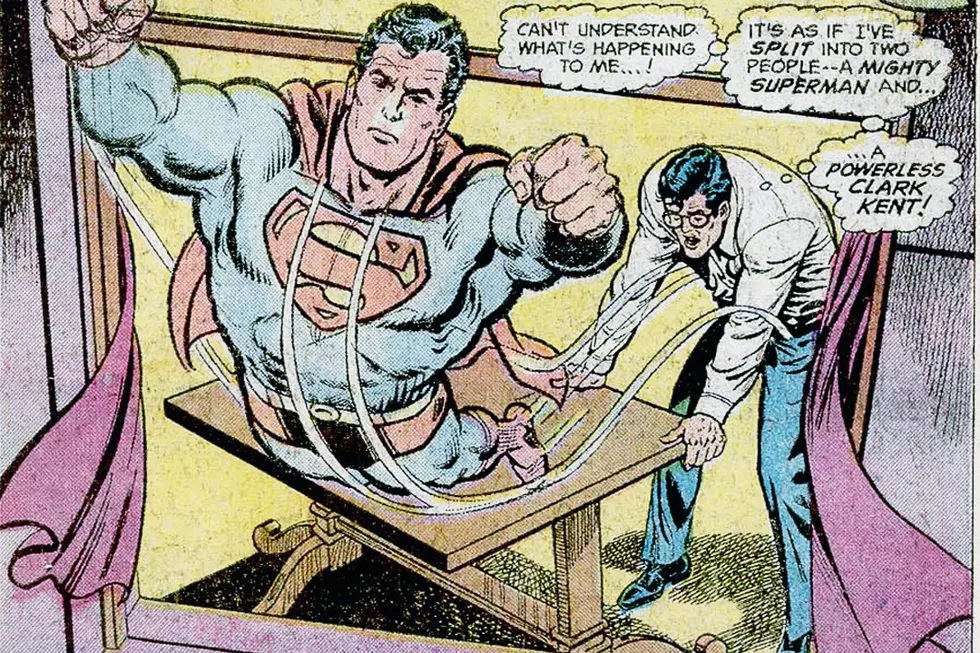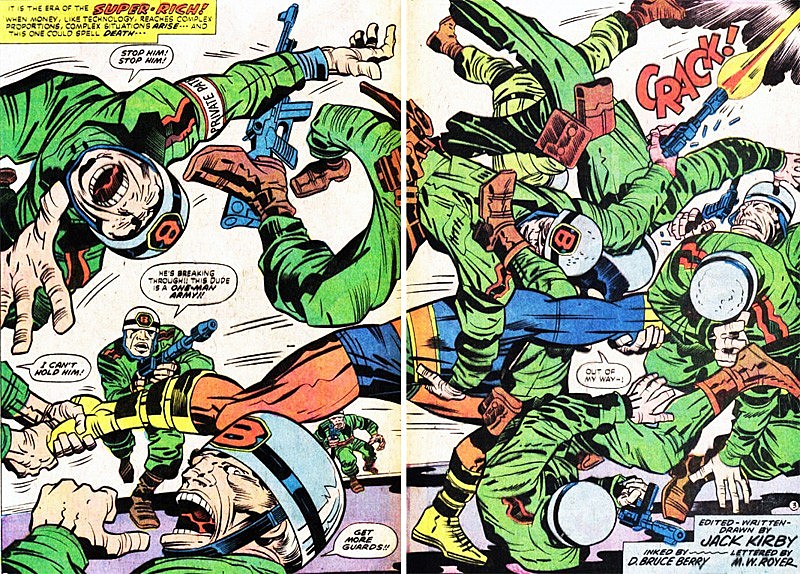
Bizarro Back Issues: OMAC And The City Of The Super-Rich!! (1974)

On the off chance that you missed it, yesterday was Jack Kirby's birthday. The King of Comics would've been 95, and it probably won't surprise anyone to learn that here at ComicsAlliance, we've been thinking a lot about the man and his contributions to the medium this week. That's why I decided to mark the occasion with what is, without question, my single favorite Kirby comic of all time.
Strictly speaking, it may not be his best work, and it's definitely not his craziest -- that honor would probably go to the debut of Paranex, the Fighting Fetus in the pages of Captain Victory -- but there aren't a lot of comics I like better than the one where the One Man Army Corps fights an entire city, dies, and still wins.For those of you who aren't familiar with it, OMAC was one of the Kirby's more obscure creations from his time at DC in the early '70s. While the Fourth World saga that he was weaving through the pages of Jimmy Olsen and The New Gods was a kind of mythological morality play writ large, OMAC was, at its heart, an update of what he and Joe Simon had done thirty years earlier when they created Captain America.
Stop me if you've heard this one: When the world is on the brink of destruction, a powerless young man is chosen to undergo a strange, unique experiment to turn into a super-soldier with the ability to single-handedly battle the unchecked evil forces of tyranny and oppression that threaten innocents. It's the same origin story for both Steve Rogers and Buddy Blank, the man who would become OMAC, with just a few details swapped out. Professor Erskine, the Super-Soldier Serum and the Vita-Rays are replaced with the sentient satellite called Brother Eye and a round of instantaneous "electro-hormone surgery." They're even both designed to echo the past; Cap's shield and scale mail are meant to make him a modern-day knight, while OMAC's amazing mohawk is meant to evoke a Roman centurion. Just, you know, Kirby'd up a little. Or a lot.
The only big difference -- and, in a way, the most telling similarity -- is that they're both products of their time. Cap is rooted in being created during World War II in just about every aspect of his character, a fictionalized assault on Nazis directly from the brain of Simon and Kirby. But OMAC is the product of the '70s and a different set of societal fears. His stories are set in a worst-case scenario version of the future, where the world was in danger from resource shortages, science motivated solely by profit and, most importantly, the omnipresent threat of nuclear war. That, in fact, is the catalyst for OMAC's creation. His world is too dangerous for armies, whose actions will inevitably be met with a nuclear holocaust. Thus: The One Man Army Corps.
In a lot of ways, it's Kirby's most prescient work -- the letter column of #1 talks about how fast the world is changing and how computers across the country are linking up to "exchange the time of day" across networks, and that was a book that came out in 1974. Reading through it, you can easily see the lines between the real-world fears and frustrations of the time and how Kirby was translating them into adventure stories so that his characters could deal with them.
And usually, that "dealing with" involved just beating everyone involved to a pulp. Case in point: OMAC #2, a book that doesn't even wait to get past the cover before it starts being awesome. Check this thing out:

As a noted fan of cover blurbs, I've always wondered why they stopped using text to grab attention on comics, but now I think it might be because there was only so much to go around and Kirby actually used it all up. Seriously, even before you get to one line of artwork, this cover has promised you...
The world that's coming!! Dangerous and exciting! Are you ready for OMAC, One Man Army? In the era of the "Super Rich," Mister Big can "Rent a City!" For Assassination!
Take a million... a billion! Money is no object... only KILL OMAC!
The only reason you shouldn't want to drop two dimes to find out what happens in that thing is because by the time you're done reading the cover, you've pretty much gotten a story already. Once you do open it up, though, it gets even better.
Since he mostly worked on a six-panel grid, Kirby had a lot of room to play around with in his comics, and he took to opening a lot of his stories with a technique I usually refer to as "KirbyScope." Page one was always a full-page splash, and pages two and three were always a double-page splash, usually of someone or something getting completely wrecked, and OMAC #2 is the best one of all. It was actually the first piece of OMAC that I ever saw, back when I was working at the comic book store and my pal Scott decided I could no longer live my life not knowing about this comic.
Here's the first page:

Oh, son. You have just made the biggest mistake of your life.
As you might expect, it is a bad idea to tell the One Man Army Corps where he can and cannot go. How bad, you ask? This bad:
There is so much to love about this panel, but the guy shouting "THIS DUDE'S A ONE-MAN ARMY!!" and the poor scrub hanging onto OMAC's foot are in the running for my favorite things in the history of comics, period.
In case you missed the setup what with all the righteous ass-beating that was being handed down, the premise of the issue is that an entire city has been rented by the "Super-Rich" Mr. Big, which everyone is okay with because his investment means that they don't have to pay this year's taxes. Now, I realize that this concept of there being some kind of class of super-rich Americans who control most of the world's wealth and win over the public by promising they won't have to pay taxes is a little far-fetched and unbelievable, but what do you want? It's science fiction.
The twist, though, is that the whole party is just a setup. Mr. Big has thrown this entire shindig for one purpose: Killing OMAC, who's in town (whether you like it or not) to talk to Brother Eye's creator, Myron Forrest. Obviously his private security forces aren't up to the task, so it comes down to these two:

Although they're disguised as mere partygoers, Pagliacci and La Parka over here are actually two of Mr. Big's top assassins. They don't get OMAC, but they do manage to get off a shot that fatally wounds Forrest, another echo of Captain America's origin. OMAC, meanwhile, is only slightly annoyed and tells them that even a city isn't a big enough place to hide from him, then walks out while everything in Forrest's office is vaporized to keep it out of enemy hands.
At this point, we're ten pages into the story, which is actually moving pretty slowly by Kirby standards. Time to meet the bad guy!

Mr. Big, seen here with a guy that I am almost positive went to work with M. Bison in the '90s, wants OMAC's power for his own evil ends, and when his costumed assassins return with the news that they've only killed Forrest and not the seven foot-tall Global Peace Agent, he lays down the law on 'em:

Meanwhile, out on the street, OMAC explodes a hot air balloon by throwing a spear at it.

The balloons prove to be enough of a distraction, though. The two assassins get the jump on OMAC and -- after a scene where they inexplicably exclaim "this bird is a juggernaut!" -- OMAC is shot dead!

But not really, of course. Once he's been taken to Mr. Big's headquarters, some more GPAgents bust in and reveal that he was really just faking, since all of his vital functions are actually remote-controlled from space. Then, just to prove they mean business, Brother Eye vaporizes the two assassins and Mr. Big is hauled in for his attempted murder, proving that no man is so rich that he's above the law.
And next month? Kirby leaves you on a note that things are actually going to get bigger than a city full of assassins by telling you that OMAC fights ONE HUNDRED THOUSAND FOES.

It's a crazy little story with a genuine deus-ex-machina (or at least, satellite-ex-orbit) ending, but it's one of the most pure examples of Kirby's dynamic style. The panels are bursting with action, the stakes are high, and the desire to see the powerful brought to justice is one that's always going to be relevant. For all its silliness, there's a passion to it and a power that comes through beautifully, which is even more amazing when you stop to think that this was a time when the 57 year-old Kirby had just come off a schedule that saw him writing and drawing a complete comic book every two weeks.
In short, it's everything I love about the guy. The dedication, the skill, the imagination, all of which are often imitated but have yet to be duplicated. That's why I love it, and why it's so inspiring even today.
More From ComicsAlliance










